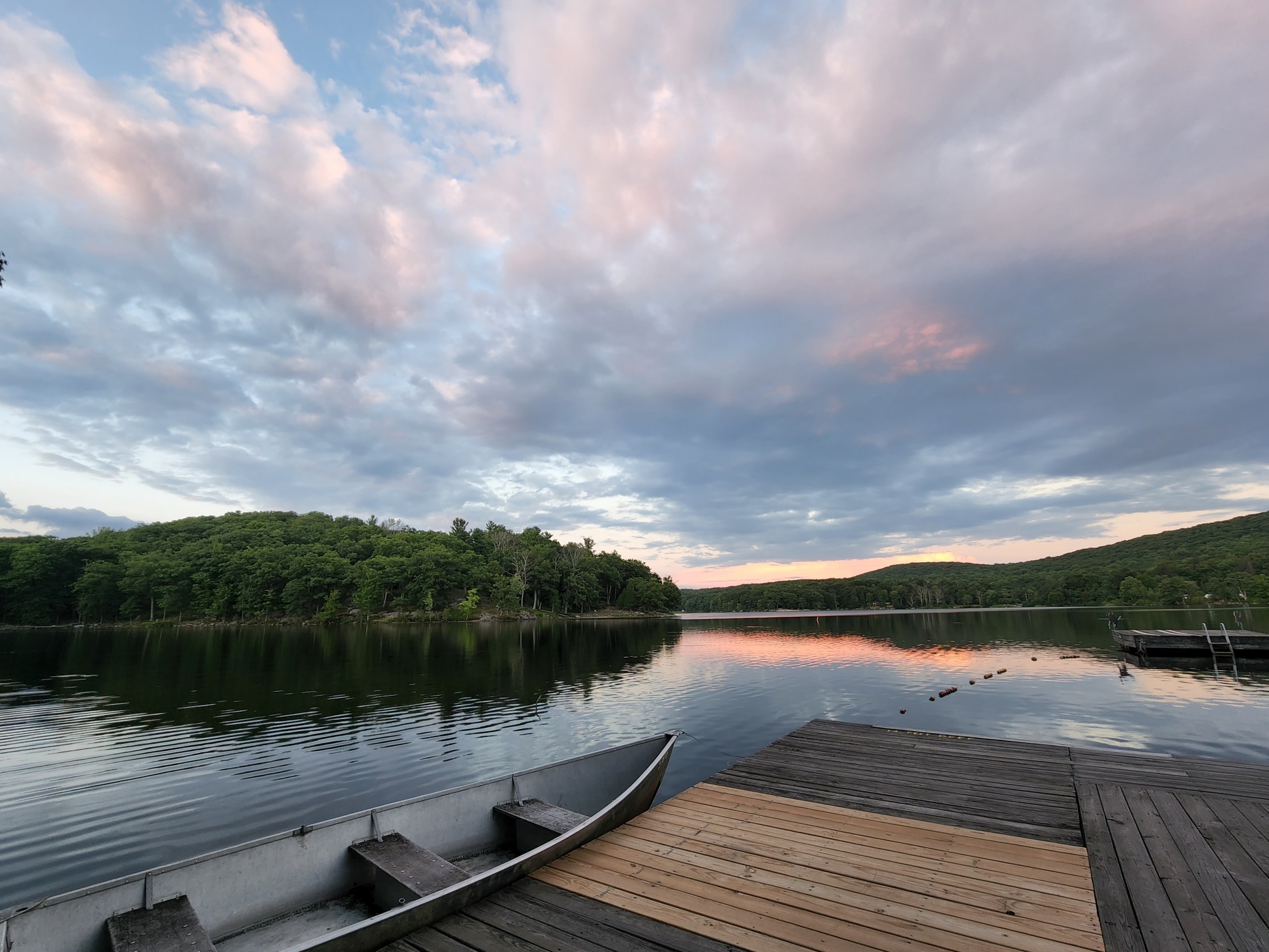A series of posts as we look forward to the 100th Anniversary of ADKNY in 2023
Today we learn about the dam that was constructed to create Lake Sebago.

Harriman State Park was created in 1910.
Before the Sebago Dam, there was the construction of Seven Lakes Drive in 1913-‘14. The purpose of the road was to connect lands located within Harriman and Bear Mountain Parks. (1)
“In 1914, Major William A. Welsh, an engineer, was hired as General Manager and Chief Engineer of the Bear Mountain-Harriman Park. He planned a new road through the park. Seven of the lakes were built by 1920. In 1919 he rechristened a number of the lakes with suitably idyllic Iroquis and Algonquin Indian names; Nawahunta, Tiorati, Kanawauke, and Shahehe.” (2)

“Lake Sebago is the largest lake in Harriman State Park with 310 acres. The name is Algonquian for “big water”. The lake filled the former site of Johnsontown, a pre-revolutionary logging settlement founded in the mid-1700’s in the Stoney Brook valley. By the early 1900’s, Johnsontown was the largest mountain settlement in the western part of the Ramapos. In 1916-17, the Palisades Interstate Park condemned the land, on the grounds that the settlement was build on swampland (“the great Emmetfiled Swamp”). Many homeowner’s resettled in nearby Sloastburg. The PIP took possession of the land and the homes, stores, school and church were torn down before the Stony Brook valley was flooded to create the new Lake. Remnants of the Johnsontown sawmill is still visible to scuba divers.” (3)
Geoff writes: “Wow!! I haven’t thought of “Lake 10” in decades. It identified to delivery men that here is where to offload dam materials. We used it in a weekend flyer to tell applicants “If you see this sign, you’ve gone too far. Go back four hundred and xx feet. Our sign is on the right. It worked if you were coming from Sloatsburg.”
Our camp officially opened on April 17, 1926.
To quote the “Schedule of Summer Outings 1926”, “The object of the camp is not purely social, but is rather a means for obtaining greater opportunities for outdoor activities. No doubt in summer swimming and boating will be the chief attractions. Boats are being purchased and should be on hand in a few weeks. A few members have their own canoes, which are kept at the camp. Swimming was possible all during May and as each weekend goes by the lake depth is increased. At the present writing (middle June), the gates of the dam have been closed and the water is being allowed to rise. The work on the retaining wall is going on rapidly and should keep a few weeks in advance of the lake rise. The exact date of completion of the construction work is uncertain, and the rise of the water level will, or course, depend on the amount of rainfall during the summer. Several fair-sized streams feed the lake and unless there is a severe drought, it should not be many months before the final level is reached.”

The “Schedule of Winter Outings 1927” indicates “Lake Sebago is now full to overflowing and is covered with ice a foot thick. A small rink will be kept open, even after the heavy snows. Coasting, snowshoeing, and skiing will be popular as soon as a good blanket of snow arrives. If these frivolous pursuits bore (?) you, there is no better way to develop muscle that to haul and saw wood, lug coal from across the lake on sleds and carry water uphill from the hole chopped in the ice.”

Enjoy!
Ellen King
Archives Committee
References:
(1) Along the Appalachian Trail: New Jersey, New York and Connecticut, Leonard. M. Adkins and the Appalachian Trail Conference
(2) Across the Great Border Fault; The Naturalist Myth in America; Kevin T. Dann, 2000
(3) Scenes from the Trail 2020 – Lake Sebago Loop – Harriman State Park, July 15, 2017

Leave a Reply
You must be logged in to post a comment.